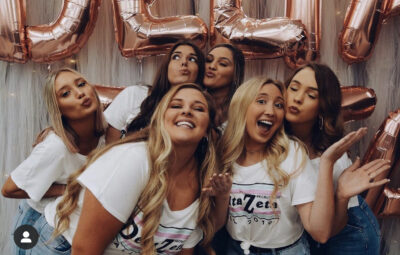Rather than setting New Year’s Resolutions for myself that are vague and overdone like going to the gym more or eating healthier, I always try to set two or three really pointed goals that I know I will be able to accomplish.
Don’t get me wrong, the examples I previously mentioned are great goals, but they’re things I am always working toward, and to me they don’t feel like they warrant the title of a resolution. One of mine this year, however, is to learn to like the color pink.
It’s incredibly random, I know, and you’re probably thinking that it’s even a dumb goal to have to teach myself how to learn to like a color. It’s just a color, right? For most people, yes, I can agree that it is just a color and they really aren’t important to the greater scheme of life. However, everyone has favorites, and that means we naturally have least favorites as well.
The greater question in this is: why? What pulls us to have favorite colors over others? Why are there some colors that we completely detest and are disgusted by? I’m sure there are psychology studies done on the matter, since color can be such a triggering thing, but these are questions I have been asking myself while thinking about why I haven’t liked the color pink for the majority of my life.
Strangely, I think that this has to do with identity. Particularly for the colors blue and pink, there is such a strongly gendered association of these colors. Though I do believe this is changing with increasing frequency, this idea that one color applies to us more appropriately because of our gender is still pervasive.
Growing up with two older brothers and all of their friends, I wanted to be seen as tough. Of course, when I was younger and before I could choose what I wanted to wear on my own, I wore tons of pink and ruffles and dresses because that’s how my mom dressed me. It probably didn’t help that I was bald until I was two, so my mom wanted people to know she had a little girl and not a little boy in a dress in her stroller. So maybe it’s more about how my mom wanted me to be perceived then?
After I was old enough to make decisions for myself, probably around age four, I remember deciding that my favorite color was definitely blue and no longer pink. I wrote it on my preschool info sheet and am sure my mom has it tucked away in a box somewhere.
Nonetheless, I shed that attachment I had to being girly because I wanted to fit in with my brothers and not just be the annoying little sister, but actually be able to participate in the things that they were doing.
For much of my memory after that, with a few discrepancies I’m sure, I haven’t liked the color pink. I didn’t want it on me, I didn’t want it in my environment and I definitely didn’t consider it one of my favorites.
I think that, because I was trying to suppress my femininity for one reason or another, I subconsciously started to dislike this color. Looking back, I am of course annoyed by my younger self’s behavior. Being a woman is awesome. I love being feminine. These are things that I am proud of and love to embrace in my adulthood.
With all of this being said, this year I am not only deciding to like this color, but also deciding to not place so much weight in these arbitrary classifications of identity that we get so wrapped up in, even from our birth. Learning and unlearning go hand in hand, and that is more broadly what this resolution encompasses.






